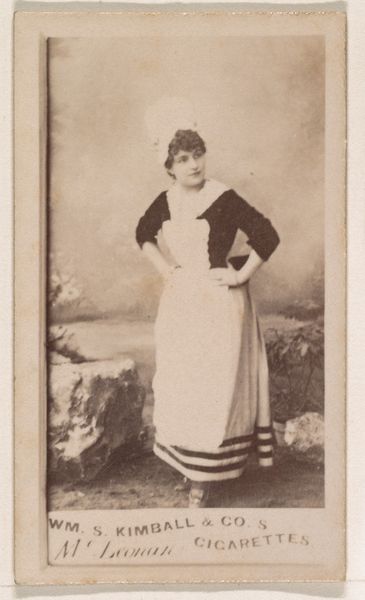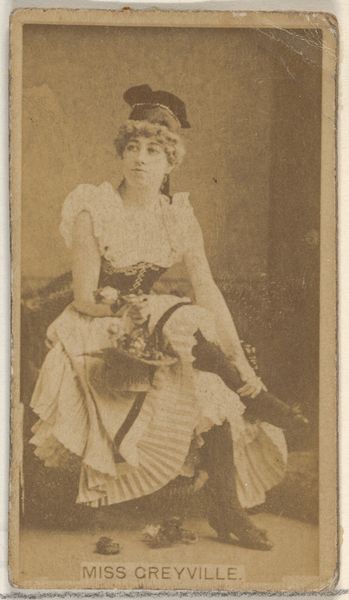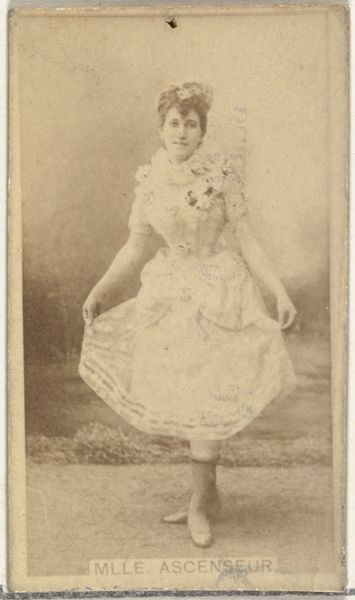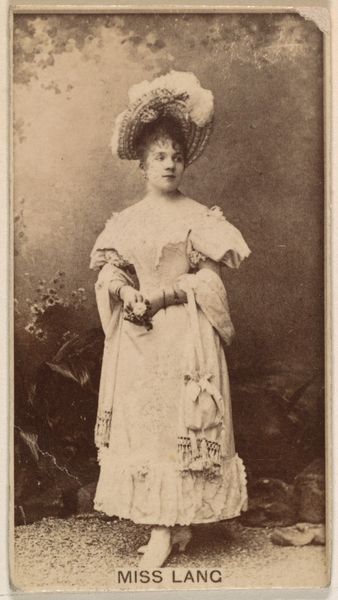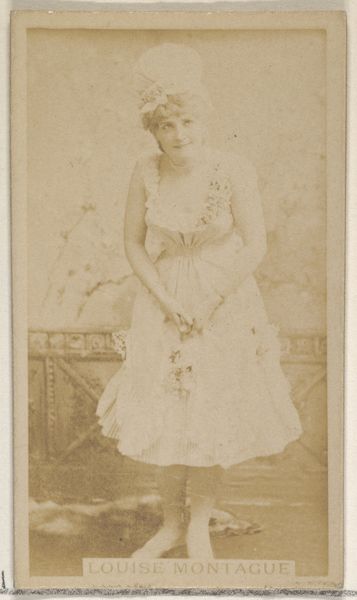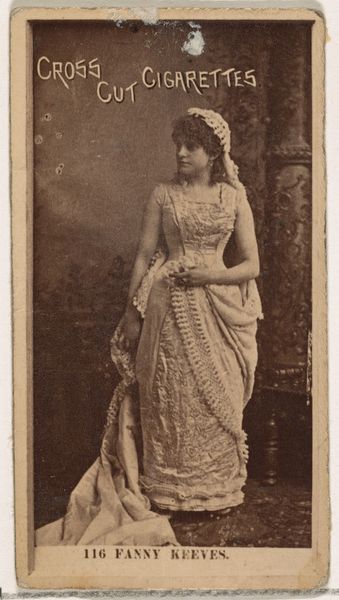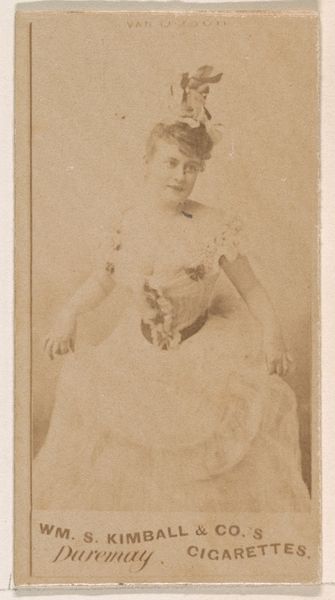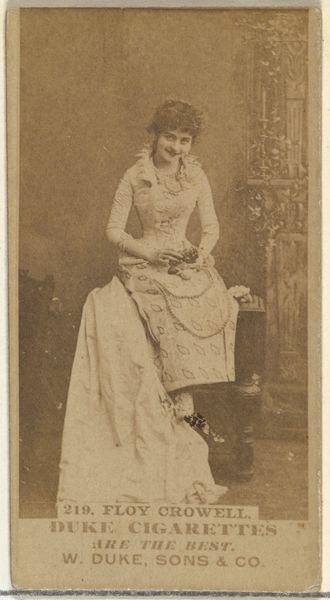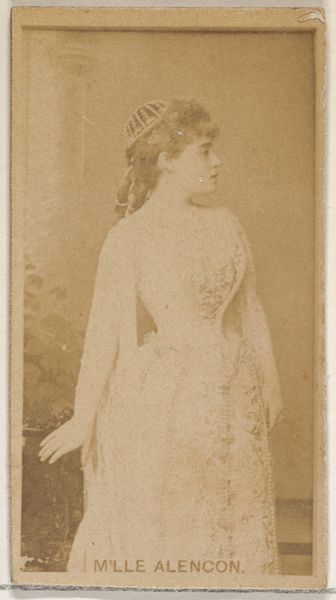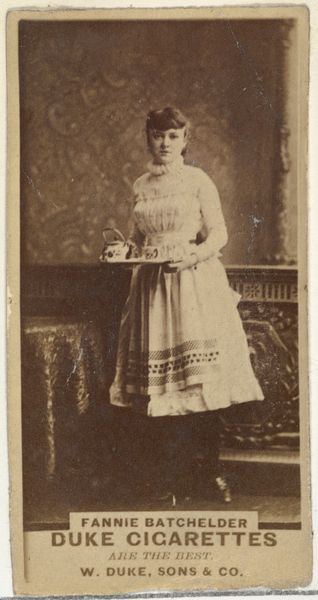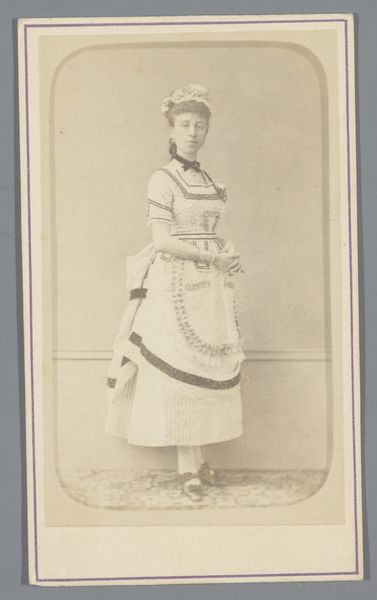
photography
#
portrait
#
photography
#
historical photography
#
yellow element
#
19th century
#
history-painting
Dimensions: height 83 mm, width 52 mm
Copyright: Rijks Museum: Open Domain
Curator: Here we have a work by Jan Goedeljee entitled "Portret van een staande vrouw in klederdracht," placing its creation somewhere between 1880 and 1905. The medium, quite fittingly, is photography. Editor: There’s a fragility, a sense of being captured, about this image. It evokes the delicate process of early photography, that brief moment stolen from time. Curator: And what does it suggest to you to see this young woman in her klederdracht? Her “traditional costume?” How might we think about it intersectionally, with layers of identity interwoven? Editor: Costume, inherently, speaks volumes, doesn't it? It's never a neutral signifier. Think about class, performativity, cultural pride…and potential repression. Was this dress an everyday reality, or an artifact for special occasions, a staged symbol of heritage? Curator: Exactly! The staging is key. We're looking at a photographic portrait, undeniably posed. Her dress communicates adherence to local tradition and cultural norms—or a performance thereof—while her composed expression possibly veils more complex realities of a young woman negotiating social expectations. Editor: I see her captured within multiple frames – the photograph itself, its ornate gold border, and of course, the confines of societal expectation. It emphasizes the controlled image being presented. But, stepping back, what’s really compelling about the piece in this presentation, is the sense of time held still. Curator: That stillness underscores how constructed "history" itself is, doesn’t it? Goedeljee and the sitter collude in the production of a carefully posed portrait of local tradition, yet, to whose benefit? Editor: The photographic preservation of tradition then could have empowered or restricted this sitter. Ultimately, looking at it, I question which forces guided Goedeljee. Curator: Right, those sociopolitical dynamics—the very *who, how,* and *why* of visual culture—remain crucial, demanding deeper scrutiny of the artist’s purpose and context. Editor: It is a really gorgeous reminder that photographic 'truth' always reflects choices, both visible and unseen. Thank you for providing that framing.
Comments
No comments
Be the first to comment and join the conversation on the ultimate creative platform.
